New Delhi: In the last few years, the trend of using memes as a political weapon has grown rapidly, given their popularity among the social media-savvy youth. It is estimated that the 2019 Lok Sabha elections saw about one crore first-time voters, and to woo them, political parties, whether ruling or opposition, resorted to carpet-bombing social media apps such as Sharechat, Facebook and Instagram with different kinds of memes.
Memes — a funny take on social, cultural or political issues — emerged circa 2015 as a hot new digital trend.
In the years leading up to the 2019 elections, memes played a huge role in creating a ‘Pappu’ image for Congress president Rahul Gandhi. They also derided other claimants to the PM’s chair, while lionising Narendra Modi as a “powerful leader”.
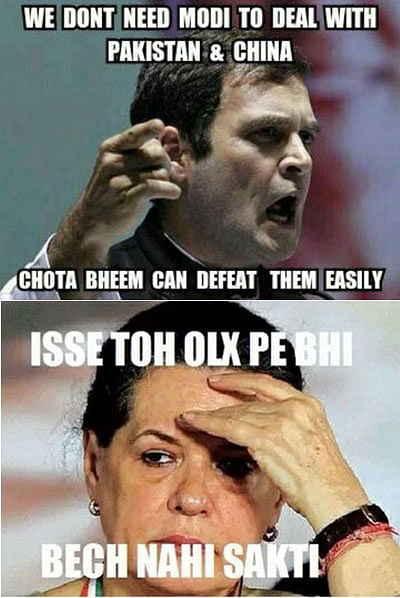
From hilarity to jail
The general reactions to memes are those of hilarity — but only as long as the memes are about politicians people don’t like. As soon as a meme is spotted mocking their favourite leaders, the reaction is often derisive.
Priyanka Sharma, convener of the BJP’s Youth Wing in West Bengal, was arrested on the charges of sharing a “disrespecting meme” featuring CM Mamata Banerjee. Her crime was that she superimposed Banerjee’s image on an image of Priyanka Chopra attending the Met Gala.
Not only was Sharma arrested for this, but several harsh charges under Section 500 (defamation), Section 66A (possession of objectionable material) and 67 (distribution of explicit sexual content) of the Indian Penal Code were also slapped against her. However, she was ultimately granted bail by the Supreme Court.
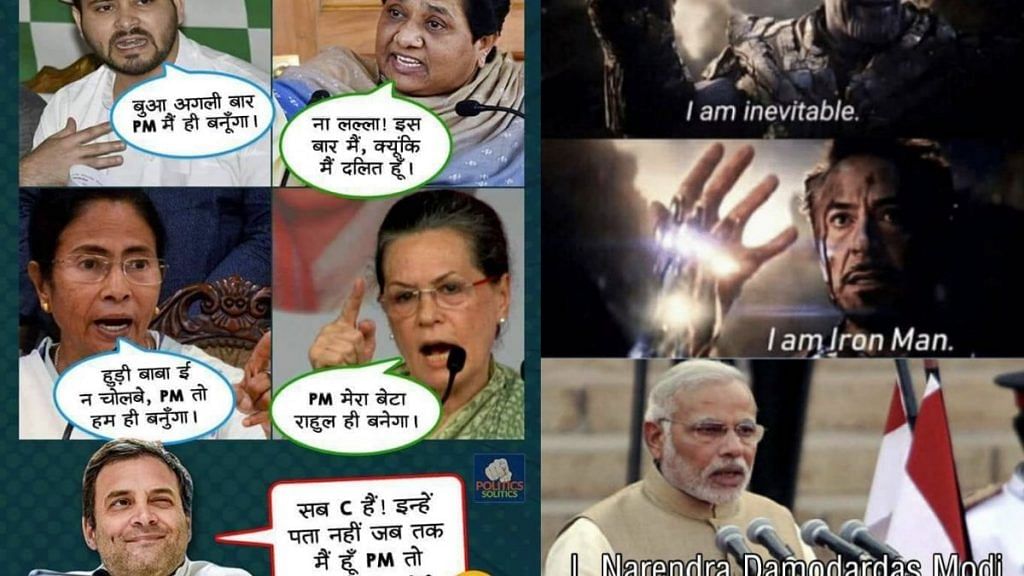
Political cartoons versus memes
Although people often equate memes with political cartoons, they are two very different things. Compared to the serious art of political cartooning, memes are mere surface-level jabs.
Cartoons can often present an issue in greater depth than a 1,000-word analysis. It is said that India’s first prime minister Jawaharlal Nehru used to enjoy cartoons about him drawn up by Shankar, the father of Indian political cartooning, and is known to have told the latter: “Don’t spare me, Shankar!”
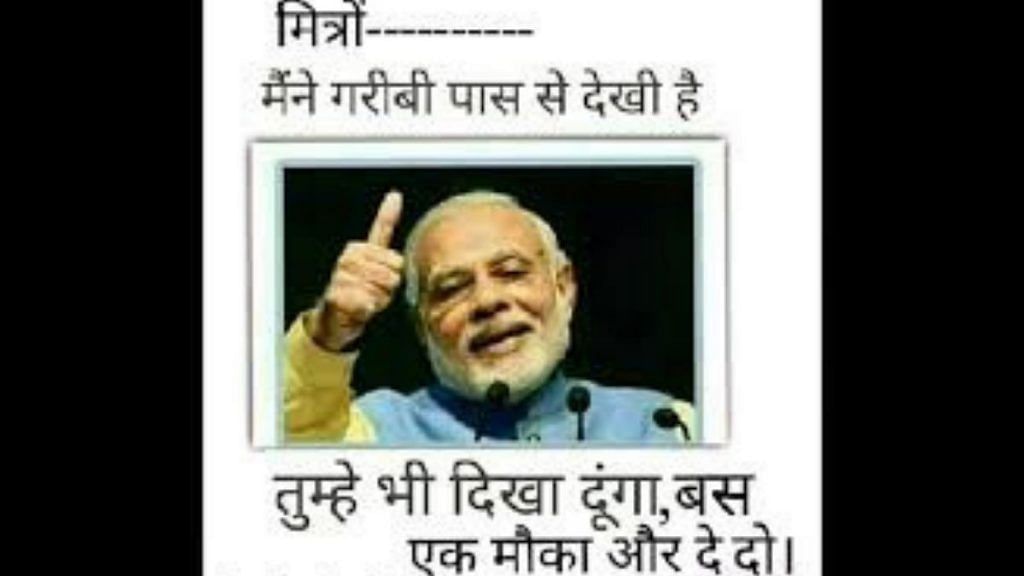
Memes, meanwhile, are intended for instant comic relief, lack any kind of seriousness, and are often forgotten as quickly as they go viral. They are also controversial because they can be used to ridicule someone on the basis of race, language, gender and caste, and are often created with an offensive intent.
Also read: Mamata meme case: Dinamani says public figures must have thick skin
Millennials are fond of memes
Rahul, an M.Sc. student from Chandigarh, says memes can explain any topic in an easy manner. “Reading an article takes some time and effort. For example, let us assume a leader like Rahul Gandhi has said something funny about water and a meme is created for it. Most of the online users will understand the whole issue with just one look at that meme,” he says.
Ghanshyam, who operates several pages on Facebook, adds: “People relate and react to political matters in a better way with the help of jokes and memes. Memes attract a larger audience, which ends up staying connected. Keeping people/users connected to a long political post is a tedious job.”
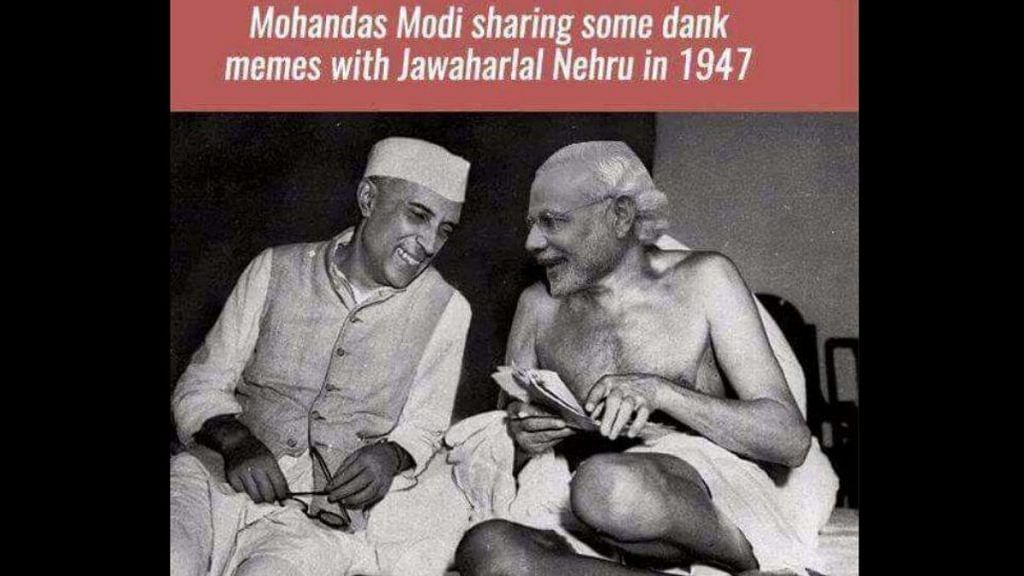
IIT graduate P.C. Yadav says: “Election time is the best for creating and sharing memes. Often, one meme is enough to explain a whole issue. People do not have enough time to read and understand a detailed analysis.”
Shivani, a resident of UP, says: “I do not have much interest in politics. However, I find memes featuring Rahul Gandhi as ‘Pappu’ quite funny.” Needless to say, she doesn’t think ‘Pappu’ can ever become a leader.
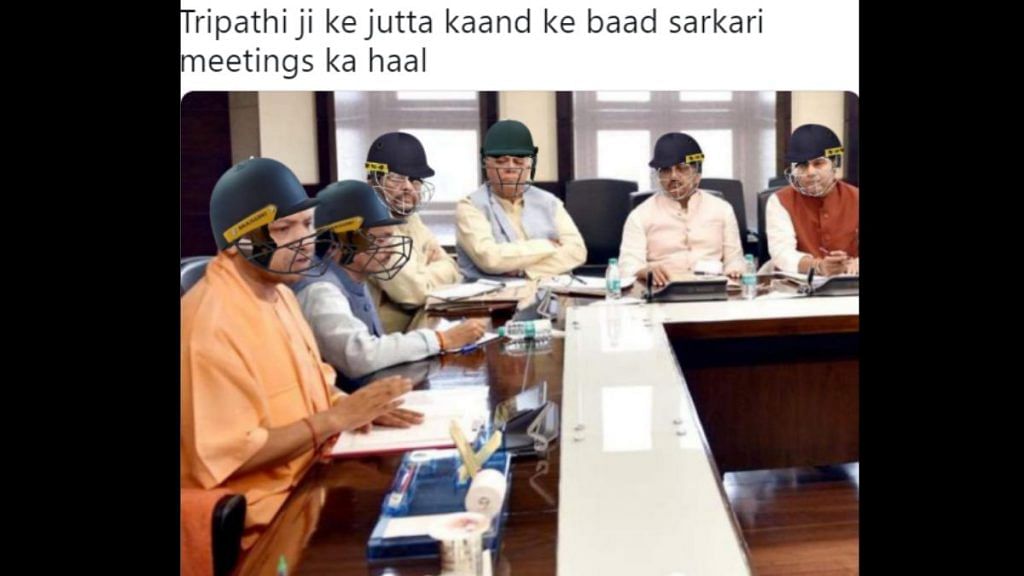
Jay, a Delhi resident who peruses a lot of memes, says: “These memes often tell you about character of every individual politician. For example, memes based on Arvind Kejriwal’s habit of speaking too much are funny. They fit in our daily lives too — for example, if a friend is talking a lot, we say ‘Don’t act like Kejriwal’.”
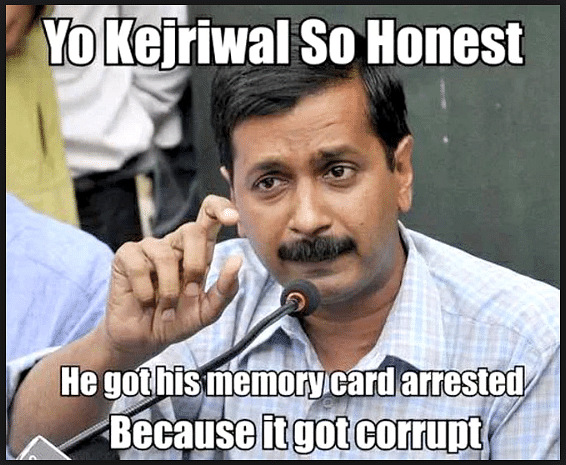
Massive downside
Memes can easily be easily misused to run a disinformation campaign during elections, and some observers say they were. They end up creating a specific image for a political personality, and the common masses start looking at the person in that very way.
In the era of fake news, messages spread via memes can also be considered real. The meme might be forgotten, but the wrong message spread by them is often retained in a conscious or subconscious manner.
Unlike cartoons, since memes can easily be created by anyone, anywhere, they can be misused in all possible ways. The anonymous nature of social media has made them a powerful political weapon.
Also read: Vivek Oberoi apologises for Aishwarya Rai Bachchan meme after social media backlash


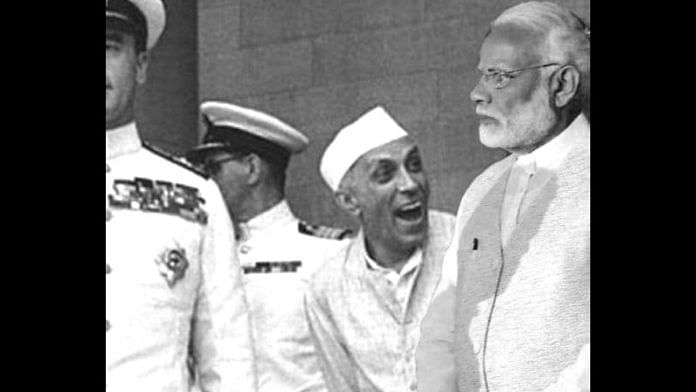

Memes are no different than cartoons. In a society that cries for freedom of speech, memes play as important a role as the Trump’s blimp raised with encouragement from British politicians opposed to him and his visit in the UK last year. For those who are unaware: https://www.theguardian.com/global/video/2018/jul/13/the-moment-trump-baby-blimp-lifts-off-video